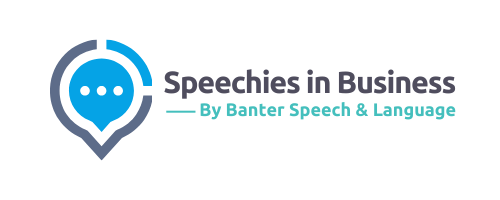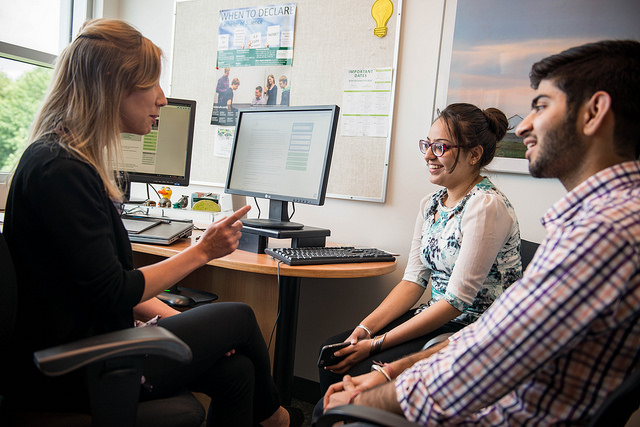Speech pathologists in private practice: How to learn new skills rapidly
By nature and necessity, speech pathologists in private practice are life-long learners. Not only do we have to stay on top of research to keep our clinical skills up to date, we have to learn finance, marketing, technology, compliance, and other business skills, too.
Learning is essential to providing quality care to clients and for running our practices. But there are so many things to learn, and so little time. So what can we do to learn new skills rapidly?
Skills and knowledge are related, but different. Both are necessary to do professional work well
Professional work combines practical skills with special knowledge. They are not the same thing:
- In law, I graduated with good academic knowledge of the laws of evidence, but then found myself as a new grad unable to make a simple filing because I didn’t have the skill to know how to draft the filing in a form that would be acceptable by the Court. I needed my supervisor to show me how to do it, using a template and modelling.
- In the first semester of my speech pathology degree, I memorised head and neck anatomy, but then struggled to complete my first cranial nerve exam on a real, breathing person. It took me a good 15 tries before I could smoothly coordinate the practical motor requirements of the tests with my theoretical knowledge of the cranial nerves.
As a nerd, I’ve always found it easier to start with knowledge, and then learn the practical skill. Some of my colleagues do it the other way around: throwing themselves into practical tasks and then building the necessary professional knowledge around what they do.
Both ways can work. But good speech pathologists learn quickly that, in clinical practice, you need both skills and knowledge to do a good job.
Learning a new skill isn’t the same thing as improving an existing skill
Seems obvious, right? But we sometimes forget that you need to walk before you run. Many speech pathologists I know (including me!) sometimes forget that acquiring the basic skill requires a different approach to training an existing skill. Learning to walk is hard. Going from walking to jogging is less hard; and accelerating your jog into a run is easier again.
How to learn a new skills quickly?
Josh Kaufman, in his excellent “The First 20 Hours: How to Learn Anything Fast”, recommends 10 key principles of rapid learning. Here they are, paraphrased and ‘translated’ for speech pathology practice:
1. Choose a lovable project: Rapid skill acquisition is hard. It helps if you choose a skill that is important to you and your business – a skill that will make a difference, and ideally, that you will enjoy having. For example, early on, I decided to learn how to do evidence-based voice therapy for people with Parkinson’s Disease because I found the work very rewarding. I learned how to blog properly because I love sharing knowledge. I learned how to use video editing software (like Camtasia) to make training videos for my team because I was sick of spending my time saying the same thing over and over and wanted to save time. In each case, I had a compelling reason to do the work.
2. Work on one skill at a time: Focus! In our clinic skills improvement program, for example, we focused first on deepening our knowledge of language stimulation skills for children with Autism Spectrum Disorder before we kicked off a project to improve our diagnosis and treatment of childhood apraxia of speech. In business marketing, we decided first to learn the basics of Facebook, Twitter, LinkedIn, then Instagram because my target audience was interacting on those platforms. I don’t worry too much about Snapchat at this stage. But, like Instagram, I might change my mind if it makes sense from a business perspective to do so.
3. Define your target performance level: To be good at my job, I don’t need to become a web or graphic designer, or produce award-winning documentaries. I need my work to be clear and useful. What does good enough look like to you? For new clinical skills, our base-line is competence. We won’t offer a service until we’re sure we can do it competently. In business marketing and advocacy, our base line is based on the usefulness of the information we present. Will a particular blog post give families enough evidence-based information to know what to do next or where to go for more information? This means we always proofread our work for readability, and cite our sources. It doesn’t mean that we aim for perfection. Trying to be perfect is a fool’s game, and can lead to procrastination and paralysis.
4. Deconstruct skills into sub-skills. Most important skills can be broken into sub-skills. For example, when learning to do Cycles, we broke the program into sub-skills. We read a few of the leading peer-reviewed articles. We blogged about it (mainly to explain it in Plain English to ourselves). We broke the research down into chunks, like how to choose targets, how to do auditory bombardment, how to explain the program to parents, how to give clients feedback on attempts, how to use reinforcement and feedback, and how to ensure adequate dosage/repetitions in sessions. We then story-boarded a sample session and tried it out on each other in role-plays. We then developed resources (e.g. audio recordings and target word lists) to support efficient and consistent delivery across the practice. This approach works for business skills, too. For marketing with infographics, we first sat through a tutorial on how use the software properly (Canva), then worked out how to make a readable template, then practised summarising some of our more popular blog posts into single page bullet point lists, and finally mapped out how to get the work done on a schedule.
5. Obtain critical tools. It’s hard to practice a skill without the right equipment, and it’s easy to put things off because you don’t have the right tools. For example, in the clinic, you need evidence-based resources to assess and work on each of the Big 5 and oral language comprehension before you can practice literacy intervention. In business, having access to quality templates, procedures and management systems is essential when learning, for example, how to improve client satisfaction ratings and retention, or to reduce your failures to attend.
6. Eliminate barriers to practice. You need space, resources and time to practice new skills properly. Distractions (e.g. emails, phone calls, texts, Facebook) and emotional blocks (like fear, doubt, imposter syndrome, and embarrassment) can get in the way of learning new skills. In the clinic and in business, I block out times to work on new skills. I unplug my devices and force myself to persevere, despite my internal doubts.
7. Dedicate time to practice. You have 1,440 minutes a day to get things done. We all have work and family commitments. We all need leisure time, exercise, and sleep. But we all have time-wasting behaviours, too. I did a time audit and discovered mine were Netflix binges and reading the news on my phone. By reducing both, I found the time to learn new skills.
8. Get fast feedback. After learning about a new skill you think is important, don’t wait months to get your hands dirty. Try things out safely in the real world as soon as possible, and be prepared to make quick changes to improve your accuracy and skill level. For skills like book-keeping and social media posts, you might get instant feedback from your system or followers (sometimes a little confronting!). For new clinical skills, try to gets lots of immediate feedback on how you are doing when you are first practising the skill; then move to delayed and less frequent feedback as you master the basics and start training the skill. Experienced mentors can be a big help here. But, if you don’t have one to hand (and you should!), tools like biofeedback, or video and audio reviews of your performance can help you assess how you are doing – even if they are painful to sit through in the early days!
9. Practice in bursts, by the clock: When you’ve mastered a skill, time flies. But, during your first few attempts, time can drag. In the early stages, set a minimum block of time to work on the skill, e.g. 20 or 25 minutes. Once you start, keep going – even if it feels like you’ve been making mistake after mistake for hours. When I’m particularly hopeless at something (usually fine motor-related), I sometimes feel like the timer will never go off! Hang tough, even if you feel terrible about your poor performance and ‘urgently’ need to know all about the local footy scores or have a sudden urge to Marie Kondo your garage. Aim to distribute practice throughout the day when learning a tricky motor skill. Kaufman recommends practising new motor skills just before bedtime so that your brain can consolidate your learning during sleep.
10. Go for massed practice and fast repetitions: you need sufficient quantity of practice and speed of trials. Once you’ve achieved acceptable ‘basic form’ in whatever skill you are learning, practice as much as you can, and as often. The faster and more often you practice, the more rapidly you will pick up the skill.
For motor skill acquisition (e.g. like touch typing or learning to use a new resource requiring manual dexterity), many of these principles will sound familiar to those of us trained in principles of motor learning.
What about rapid learning of knowledge?
Aha! Good pick up and great question. Regular readers will note that some of Kaufman’s principles are consistent with evidence-based studying techniques, such as spaced practice, forced retrieval, and doing practice tests with the same structure as the real test.
This is one of my favourite subjects and an excellent topic for another day, don’t you think? (Watch this space!)
Bottom line
For speech pathologists in private practice, learning new skills is hard, but essential. When next preparing to learn a new skill, use the 10 principles above to practice it in the most efficient and effective way possible.
Principal source: Kaufman, J. (2013). The First 20 Hours: How to Learn Anything Fast. London, England, Penguin Books.
Image: httpss://tinyurl.com/y2pnmxx9








